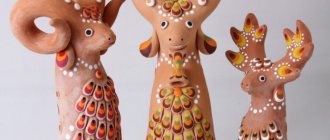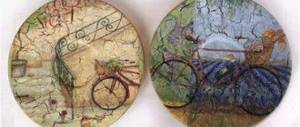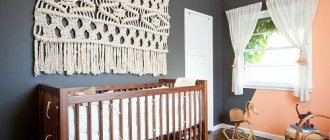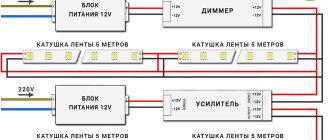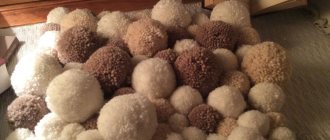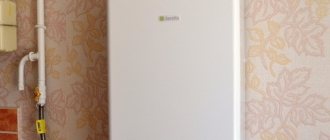The works of the masters, made using the popular patchwork technique, amaze and delight. Small multi-colored scraps of needlewomen turn into exquisite household items and real objects of art: potholders, pillows, handbags, blankets, sundresses and even entire paintings. However, every master was once a beginner. Where to start to master patchwork sewing?
Patchwork technique: recommendations for beginner needlewomen
Patchwork, like any other decorative and applied art, has a rich and interesting history of development. In those distant times, when women created fabrics by hand, and every piece of fabric was valuable, scraps, as well as worn-out clothing, were not thrown away, but were used sparingly in the household with a caring hand. Scraps were turned into rugs and old clothes into quilts. Craftswomen with artistic taste created special patterns and color combinations. And over time, this painstaking work became a special type of decorative and applied craftsmanship.
Modern housewives do not need to use fabric so sparingly, and therefore today they rarely use second-hand items for patchwork. In addition, it will be more useful for beginners to learn on new fabric that has not been stretched or worn out by time.
We also recommend that you familiarize yourself with the different styles and techniques of patchwork on this page:
It is advisable that you have a sewing machine. You can sew the flaps manually, but you will have to do a lot of seams, so such a job will not only be very painstaking, but also tiring - both for the hands and for the eyes. And with the help of a machine this work is done much faster and more accurately.
What other tools and materials will you need:
- Textile;
- Sharp scissors;
- Templates;
- Scheme;
- Graph paper;
- Pencil or soap for marking the pattern;
- Iron.
When choosing fabric for patchwork, you should focus on the following characteristics of the material:
- Make sure the fabric does not fade;
- The fabric must not shrink after washing;
- It is important that the weave of the threads does not fray when trimming;
- The fabric should be easy to iron;
- Colors and shades should be harmoniously combined.
Beginners in patchwork can be advised to make their first items from two or three multi-colored fabrics, one of which will be plain. Simple step-by-step video tutorials and photos of the work process will be of great help for beginners.
It is very tempting to sew your first product from shiny satin or velvety velor. However, it would still be wiser to opt for smooth cotton fabric.
Patchwork: master class for beginners
Special comfort in the interior is created by handmade items, in particular, beautiful and comfortable pillows. Let's try to sew a decorative pillowcase with a voluminous "Rose" application using MK. You can take any scraps for work, the main thing is that they match well in color. Don't forget to prepare the fabric - wash it, iron it.
Master class “Pillow with applique”
Step-by-step instruction .
- It’s convenient to start by preparing squares. Their number and size determine the size of the pillow.
- Then you need to cut a circle out of the fabric. In the middle, put a piece of fabric and some filler for volume (cotton wool, padding polyester). Secure in a circle using a machine stitch. The middle is ready.
- Fold the squares from the flaps diagonally, as in the photo, sew around the middle piece in a circle - 3-5 pieces.
- For the next round you need to prepare large squares of the corresponding color. Continue until the end of the intended flower size.
- The sewn petals must be trimmed in a circle.
- The finished roses are beautifully distributed on a pillowcase and secured to the product with a zig-zag seam and a wide, dense stitch. The rosette has the appearance of a three-dimensional appliqué.
- If desired, the bouquet can be supplemented with leaves cut from scraps of a suitable color. Look at the photo for a step-by-step master class. The blanket in MK is made using the “crazy patchwork” technique (you can watch video tutorials), and it consists of 30x30 cm squares. For a single blanket you need 24 pieces, for a double blanket – 36. Let’s say the pattern will be made up of 4 types of fabric.
The complexity of the ornament depends on the experience and skills of patchwork sewing
Master class “Patchwork for beginners – blanket”
Tools and materials:
- 1 m of fabric of each color (width 220 cm) - 6 or 9 squares 45x45 cm;
- For the lining - 170 cm or 220 cm (the margin at the bottom goes away after the blanket is quilted);
- Sintepon of similar sizes;
A blanket or bedspread can be sewn from simple squares or complex pieces
Step-by-step instructions for MK:
- Cut into squares and stack, alternating colors.
- Cut this layer cake diagonally or randomly. It is convenient to cut with a roller knife.
- Take the part from above and move it down under a stack of similar elements. In a cut stack there will be 1 piece of the 1st color on top and 1 piece of the 2nd color.
- Machine sew all the squares along the cut line.
- On an ironing board, carefully press the seams to one side or press them flat.
- Fold the blanks into a neat stack in the same order - squares of the 1st and 2nd tones on top.
- Using a ruler and a knife, cut the entire stack again along any line (you can cross the first seam).
- Move one of the top fragments down under the stack. Sew and press, remembering to fold in order - now it’s better to match the seams.
- The operation is repeated until the last detail. The optimal number of seams is 6-10 horizontally and vertically.
- After ironing the seams, you need to trim the squares to get a figure with a side of 32 cm.
- You can assemble the blanket in different ways: first assemble the front part, then quilt it with padding polyester and lining. It's difficult on a typewriter. Or quilt each square separately, cutting padding and lining.
- Gather the quilted squares together, trim and cover the seams with narrow tape or strips of fabric. It is convenient to assemble according to the scheme: ribbons of 4-6 squares, then sew the strips.
- Along the edge of the blanket, you also need to trim it with an edging made of plain fabric or pieces of rags, as in the MK photo.
Congratulations on your new look!
Simple patchwork sewing: patterns for patterns
Products in the patchwork style are made both from the same parts and from patches of different sizes. It will be easier for beginners to cope with simple patterns from elements of the same size. For this you will need templates. You can find them in specialized craft stores or make them yourself from thick cardboard.
You can even sew pillows using patchwork. Find out how to do this in the following article:
For this:
- The simplest geometric shapes are drawn on cardboard: squares, triangles - it depends on what shape the blanks for patchwork will be. This will be the stitching line.
- An additional 5 mm (for cotton fabrics) or 10 mm (for silk and satin) is set aside around the perimeter for seam allowance.
- The template is cut along the allowance line, and then a hole is made in it along the stitching line.
Templates with slots are convenient not only because they allow you to mark all the pattern lines on the fabric. Thanks to the through hole, you can see which pattern will be captured by the flap, so you can combine patterns beautifully.
If you want to purchase ready-made templates, choose ones made of transparent plastic. They are also useful for tracing the edges of a design on fabric.
Patchwork technique for beginners
In absolutely any business, practice is very important; only by getting your hands on enough can you begin to create stunningly beautiful products. The art of patchwork is no exception. If you have never dealt with patchwork before, then it is better to start with the easiest one. You should not start getting acquainted with this technique with:
- large products;
- complex schemes;
- different types of fabric;
- a large number of fabrics and elements.
Any handicraft has its own subtleties and nuances. And while you are still learning patchwork, you don’t know much, and you won’t know until, as they say, you try.
So, let's try to make a blank using the patchwork technique, for example, for a decorative pillow or a cover for a stool (it’s up to you to decide what kind of product you’ll get in the end).
At first, choose a fabric of the same type, this is done because different fabrics behave differently when processed: some stretch more, some shrink, some are much denser, and so on. To combine them correctly, however, you need some experience, otherwise your product will not look very neat. And it is best, especially for beginners, this advice is relevant, to take cotton fabrics (chintz, calico, satin and others), and not synthetics. The latter is more difficult to work with.
In addition to the fabric, we will need:
- ruler;
- tailor's chalk (or something you will use to mark the fabric);
- scissors;
- iron;
- sewing machine;
- a spacious workplace, in this case a table - a flat surface will be needed.
What is the most difficult thing about the patchwork technique? Fabric marking. Plus, it's also terribly boring. But, nothing can be done. Let's get started.
We take two pieces of fabric, fold them with their right sides inward (so that they do not move from each other, you can pin them with tailor’s pins) and cut out a square with a side of 20 cm.
On the bottom left we retreat 5 cm from the edge, and we retreat the same distance from the top right.
We sew the parts together as shown in the photo below.
Then we cut our square diagonally.
We fold the resulting triangles (with sections not sewn to each other). We measure 5 cm from the bottom of one of the legs (where the unstitched areas are) and cut it off.
Now we measure 5 cm from the resulting triangle to the left and cut it off again.
We get the following.
Now we expand our elements.
We form a new square from them, in patchwork style, and sew them together. Then we iron it. This is what comes out.
You can sew a lot of such squares =)
This is a very simple master class. No calculations taking into account seam allowances, patterns, and so on. Just two squares put together. As a result, at the end we got a square with a side of approximately 21-22 cm (it all depends on how much you took for the seams).
* Photos taken from blasz.blogspot.com (watermark left).
This is interesting: What you didn’t know about percale is all here. What is the fabric used for, its features, and so on.
Patchwork: patterns for beginners
You should not immediately, without prior preparation, start chaotically stitching the edges of the patches. The works of experienced craftswomen only at first glance seem to be sewn together from parts in a random sequence. Take a closer look and you will see a clear system of placement of all elements. Therefore, a beginner in patchwork cannot do without a work diagram, which will serve as a detailed plan for future sewing. It is convenient to do it on graph paper, marking and numbering all the elements.
These instructions will be laid out step by step:
- Sequence of connecting parts;
- Their sizes;
- Color combinations.
By devoting a little time to drawing up a diagram, you will save hours in the future that would have been spent on the painful selection of a scrap of the desired color, and you will also immediately calculate the amount of material needed.
Practice on simple and small patterns, for example, for potholders. Divide a 20 x 20 cm square into several simple shapes: rectangles, triangles, and practice creating color combinations.
Watercolor patchwork technique
The schemes for performing work using the watercolor technique are quite complex, although canvases are made from squares of equal size.
Principle of drawing:
- For work, fabrics with floral patterns are taken.
- This style is characterized by the fact that fabrics of different colors with the same pattern can be used to sew a blanket, carpet and other large rectangular items.
- Mostly, the assembly of the product begins from the lower left corner.
- More often, tone transitions are used from light to dark.
- The background stripes are located diagonally.
- When using plain and colored fabrics, you can create compositions worthy of the pen of a famous landscape painter.
Schemes for performing work using the watercolor technique are quite complex
The watercolor patchwork technique requires a lot of patience. It will take time to master the basics of the skill. Watercolor painting lessons will be beneficial.
Patchwork quilt in Russian style (video masterclasses)
The combination of red and white, yellow and black is an original Russian style. This selection of colors is deeply rooted in the pagan epic of the Slavs. Schemes of two-color drawings made up of strict geometric shapes are reminiscent of the symbols of the sun, rooster, and trees. These motifs, displayed on everyday objects, previously belonged to the history of the family and testified to its antiquity. Nowadays, not everyone can read the information embedded in a drawing, and the secrets of craftsmanship and techniques for performing elements are being revived bit by bit.
The blanket might look like this
- We take scarlet and black chintz in cuts of one square meter.
- Cut it into squares with sides 10 by 10 cm.
- We divide one second part of the blanks (of each color) into triangles.
- Divide half of the resulting triangles in half.
- For the central element, symbolizing the sun, we fold eight squares to form a crystal shape.
- The sharp corners of these two-layer elements should be in the middle.
- Then they are joined by elements of a contrasting color.
- By combining large and small parts in rows, you need to get a rectangular canvas.
- About 20 cm before the end of the work, you can make a plain border.
- Next, you should make several poisons from medium-sized elements.
The work on creating a blanket with a plain wide border is finishing.
Potholder patchwork technique: master class
A great way to get into quilting is by making potholders for the kitchen. This is a thing that is useful in every home. In addition, since the product is small in size, it can be sewn from narrow scraps, and the work is completed quite quickly.
You will learn how to make a bright bedspread using the patchwork technique in this article:
To sew using the patchwork technique, you will need:
- Multi-colored shreds of different sizes;
- A piece of non-woven or cotton measuring 20 x 20 cm;
- A piece of drape measuring 20 x 20 cm;
- Braid or ribbon 90 cm long;
- Ruler;
- Scissors;
- Pencil;
- Iron;
- Sewing machine;
- Threads, needles, pins;
- Paper for the diagram.
We carry out the work in the following sequence:
- We draw up a sewing pattern on paper. If the tack strips are narrow, it is convenient to make a pattern of rectangles of different lengths laid out in a spiral. In this case, the central element will be a small square.
- We transfer the developed scheme to non-woven fabric, numbering the elements on it.
- We start sewing from the center. We pin the first element to the non-woven fabric and sew it on with a machine.
- We apply the next flap to the previous one with the front side so that the stitching lines meet and stitch one.
- Straighten the sewn flap and smooth the seams with an iron.
- We continue to sheathe the parts superimposed on each other in this way.
- We attach the workpiece to a piece of thick drape.
- We make the edging from the tape, decorating the ends with a loop.
Having mastered such a potholder, it will not be difficult to make other practical and beautiful household items for the kitchen using the patchwork technique. Any housewife will need comfortable oven mitts, bright aprons and aprons.
Products made using the patchwork technique will be appropriate not only in the kitchen. Decorative pillowcases for sofa cushions made in this style look very original in the living room. More experienced needlewomen decorate bedrooms with bedspreads sewn from rags.
Patchwork for beginners: step-by-step master class
The simplest, but quite effective things are made from simple geometric shapes cut from bright scraps of fabric. It is not only possible, but even necessary to use fabrics of different textures and thicknesses for patchwork.
Learning to accurately cut out and evenly sew small pieces of fabric so that the elements fit perfectly together, creating an even square, will not happen right away. Therefore, it’s better to try your hand in a simplified way:
- We take thick chintz material in three different colors - floral, striped and with an abstract pattern.
- From the brightest one we cut out a long strip 15 cm wide.
- From two other pieces of fabric we cut out 8 cm strips.
- Place a wide strip with the pattern facing up.
- We fold the other two strips together, right sides inward. Stepping back 0.5 cm from the edge, we lay a seam. It is not necessary to make fastenings.
- The seam needs to be smoothed out.
- The resulting material is applied face down to the first (wide) strip with the pattern down. The parts are sewn together along the entire length at a distance of 0.5 cm from the cut.
- Using a straight edge ruler, the strip (still folded in half) is marked. It is cut into identical isosceles triangles.
- The finished elements are unfolded. Their seams are smoothed out.
- Now the parts need to be laid out on the table in the same way as they are planned to be sewn into the finished product. The drawing looks more original if its middle is formed by the corners of three-color squares converging at the center. Each needlewoman decides for herself how the stripes will alternate.
Using this technique you can make sofa cushions, bedspreads and even rugs. The only difference is the number of squares. When making large rectangular things, in addition to squares, you will need isosceles triangles. They can also be made multi-colored.
Gallery: patchwork (25 photos)
Crazy patchwork for beginners: a simple pattern
Crazy (crazy) is the most accurate name for the style of patchwork, produced according to the pattern “as God puts it on your soul.”
- When starting to make the base of a product from scraps of different sizes, shapes, textures, and colors, it is difficult to guess what the final result will be. Therefore, it is better to first put the pieces of matter in a certain order. Only then begin their docking.
- They can be joined on the wrong side of the product, but if there is a great variety of shapes of the blanks, they can be placed one on top of the other and hemmed along the front side with a zigzag stitch.
- Having collected the required size of the patchwork fabric, it needs to be shaped into the finished product using scissors.
- Now decorations will be used - lace, beads, flowers made of satin ribbons.
Crazy (crazy) - the most accurate name for this style of patchwork
Not a single master class, in which the entire process of making a pillow, handbag or other item is described step by step, can be reproduced exactly. Sewing, patterns for the arrangement of patches, the use of knitted and wicker elements in the design will make each item original, unique, inimitable.
Patchwork for beginners (photo)
- Author: admin
Rate this article:
- 5
- 4
- 3
- 2
- 1
(31 votes, average: 3.7 out of 5)
Share with your friends!
